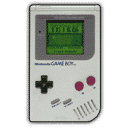
Summary:
Metroid Prime 4: Beyond finally has a clear number attached to it on the storage side, and that single figure already shapes how we get ready for Samus’ return. The Japanese download card lists the adventure at around 29GB, while early store estimates put the digital size in the same ballpark, which makes this one of the heavier downloads in the Metroid series so far. For players juggling a crowded Nintendo Switch home menu and a Nintendo Switch 2 with 256GB of internal storage, that size nudges us to think ahead instead of waiting for launch day panic. We look at what a roughly 30GB game actually means in daily use, how it compares to other big releases, and how we can clear space without gutting our library. Along the way we touch on the difference between physical and digital versions, the role of microSD and microSD Express cards, and small habits that keep both systems ready for a long stay on planet Viewros.
Metroid Prime 4: Beyond file size on Nintendo Switch systems
Metroid Prime 4: Beyond is shaping up to be a chunky download by Nintendo standards, and the first clues come straight from retail materials rather than guesswork. Japanese download cards for the Nintendo Switch 2 version list the game at 29GB, while online listings for both the original Nintendo Switch and the newer hardware sit just under the 30GB mark. The exact number can shift a little between regions and storefronts, especially once a day one patch lands, but the headline is simple: we should expect a game that occupies roughly one eighth of a Switch 2’s internal storage all by itself. That jumps out more if we still remember the days when Metroid Prime Remastered squeezed into under 7GB. Instead of treating this as a problem, we can treat it as a warning light, nudging us to tidy our storage before December rolls around and Samus’ new mission touches down.
What a 29GB file size means for Nintendo Switch storage
A 29GB download sounds like a random number until we start translating it into real trade offs on the home screen. On a launch Nintendo Switch with 32GB internal storage, the system software already eats a large chunk, leaving only a slim slice for game data. That means Metroid Prime 4: Beyond is effectively a “microSD required” adventure if we want it installed alongside anything else. On Nintendo Switch 2, 256GB of internal storage feels a lot more generous, yet a single 30GB game still bites a visible piece out of that space. Add a couple of similar sized releases, a handful of older favorites and some evergreen indie titles and suddenly that large drive starts to feel cozy again. The file size quietly reminds us that big, ambitious late generation releases come with an ongoing cost: they demand room, and we decide which memories make way for them.
How Metroid Prime 4: Beyond compares to other Nintendo releases
Putting Metroid Prime 4: Beyond’s file size in context helps calm nerves a little. Several recent high profile Nintendo titles have climbed well past the 10GB mark, and a few have edged into the 20GB range, especially when high resolution assets and more detailed environments enter the picture. Third party games on Switch 2 stretch that even further, with some blockbuster releases hovering between 40GB and 70GB. In that light, a Metroid adventure in the high twenties feels big but not outrageous, especially for a game designed to show off new hardware features and more complex worlds. We are looking at something that sits neatly between older, more compact first party releases and the truly gargantuan multi platform ports. It is large enough to justify a bit of planning, yet still small enough that a single mid range microSD Express card can swallow it without breaking a sweat.
Physical and digital versions and storage planning for Metroid Prime 4: Beyond
One of the first questions players ask when they see a number like 29GB is whether a physical cartridge will rescue them from storage anxiety. For Metroid Prime 4: Beyond, the answer is “partly.” A physical copy keeps most of the data on the game card, which reduces the initial download stress, especially on the original Switch. However, patch data, potential expansions and save files still live on internal storage or a memory card, so completely bypassing storage concerns is unrealistic. Digital buyers face the full weight of the download upfront, but they gain the convenience of having Samus ready to launch without swapping cards and the comfort of knowing the game cannot be misplaced. In both cases it pays to think about where we want the game to live long term. A dedicated Switch 2 card for heavy hitters and a split approach on the original Switch can keep things feeling organized instead of cluttered.
Preparing Nintendo Switch 2 for Metroid Prime 4: Beyond
Nintendo Switch 2 gives us more breathing room out of the box, with 256GB of internal storage and faster access speeds, but that does not magically remove the need to plan ahead. The moment we start stacking up big releases, screenshots, video captures and occasional demos, that free space indicator shrinks faster than expected. Getting ready for Metroid Prime 4: Beyond on Switch 2 starts with a quick audit: which games are truly in rotation, which ones we have not touched in months and which titles offer cloud save support so that deleting them does not feel like a risk. Archiving software instead of fully deleting it keeps icons on the home screen and makes redownloading simple when we feel nostalgic. Clearing out a backlog of temporary captures and finished demos can free gigabytes in minutes, making room for Samus long before preloads open.
Managing microSD and microSD Express cards for Metroid Prime 4: Beyond
Memory cards quietly become the unsung heroes of a long lived Nintendo system, and Metroid Prime 4: Beyond is a good excuse to take stock of what we are using. On the original Switch, standard microSD cards handle storage for digital games, and many players have already climbed from 128GB to 256GB or 512GB to keep up with the times. Nintendo Switch 2 pushes that idea further with microSD Express support, which offers much faster read and write speeds and is required for native Switch 2 titles. Choosing a card here is less about sheer capacity and more about finding a balance between size, speed and budget. A 512GB or 1TB microSD Express card can house not just Metroid Prime 4: Beyond but a rotating lineup of big releases, cutting loading times and making the entire library feel snappier. Treating the card as a “premium shelf” for heavy hitters while leaving smaller, older titles on internal storage keeps things neat and efficient.
Performance expectations and what file size does not tell you
It is tempting to equate file size with graphical quality or performance, but that shortcut does not hold up under closer inspection. A 29GB footprint tells us that Metroid Prime 4: Beyond packs more data than earlier Metroid entries, likely in the form of higher resolution textures, more voice work and richer cutscenes, yet it does not automatically promise perfect frame rates or flawless resolution. Performance depends on how well Retro Studios and Nintendo tune the game to both Switch and Switch 2 hardware, how they use upscaling technologies and how aggressively they stream assets. In practical terms, we can expect Switch 2 to offer sharper visuals and smoother performance modes while the original Switch holds its own at humbler targets, but those expectations come from platform specs, not the download bar alone. The file size is an ingredient in the recipe, not the final taste test, so we should see it as a sign of ambition rather than a guarantee of any single technical outcome.
Launch date, regional timings, and preload expectations
Metroid Prime 4: Beyond is scheduled to launch worldwide on December 4 2025 on both Nintendo Switch and Nintendo Switch 2, which means the file size matters most in the days leading up to that date. Nintendo usually opens preloads for major releases a short while before launch, giving players a window to download the bulk of the data while the game is still locked. When a download pushes toward 30GB, using that window is more than a luxury, especially for anyone with slower home internet or shared connections. Regional release timing also plays a role, since eShop unlocks often line up with local midnight and can leave unprepared players stuck watching a progress bar while friends are already exploring Viewros. Setting aside an evening earlier in the week for the preload and confirming that enough free space exists beforehand keeps launch night focused on scanning alien ruins instead of playing inventory manager with the system settings.
Practical tips for freeing space before Metroid Prime 4: Beyond arrives
Clearing space for a big game always sounds daunting until we break it into small, painless steps. The easiest wins come from trimming capture galleries, since screenshots and short video clips add up across years of play. Deleting a few hundred old captures can free several gigabytes in one go while keeping our actual game library untouched. Next, we can look at rarely used demos and betas, which often linger after a single weekend session and quietly sit on storage for months afterward. Archiving large, finished single player adventures that offer cloud saves is another efficient way to recover space without truly parting with them. For digital owners of Metroid Prime 4: Beyond, downloading overnight or during off peak hours can ease the strain on shared networks. All of these moves taken together turn that 29GB requirement from a looming headache into something our systems can absorb without drama.
Why smart storage planning improves the Metroid Prime 4: Beyond experience
Storage might sound like a dry, technical topic, yet it directly affects how relaxed and immersive Metroid Prime 4: Beyond will feel once we finally sit down to play. Nobody wants to reach a dramatic moment in Samus’ story only to realize the system has been nagging about low space or that there is no room left for future patches and updates. Planning ahead means we glide through the preload, boot the game without warnings and know that any post launch fixes or quality of life improvements can install without another round of housecleaning. On Nintendo Switch 2 in particular, combining healthy internal space with a fast microSD Express card keeps load times short and transitions between zones smooth, which fits a series built around atmosphere and exploration. With a bit of thought now, storage becomes invisible in the best possible way, letting the focus stay on scanning strange structures, mastering new abilities and enjoying Samus’ long awaited return.
Conclusion
Metroid Prime 4: Beyond landing at around 29GB is not just a trivia note for spec sheets, it is a practical prompt for players on both Nintendo Switch and Nintendo Switch 2. The number tells us that Retro Studios is pushing the scale and detail of Samus’ next mission, and at the same time it tells our systems that they need breathing room. By understanding what that size really means, comparing it to other modern games and making smart use of internal storage and microSD or microSD Express cards, we can make the whole launch feel smoother. A few evenings spent archiving finished adventures, pruning old captures and planning where Metroid will live on our devices make a big difference once December 4 arrives. In the end, a little storage housekeeping now sets the stage for a cleaner, calmer first step onto Viewros, with nothing standing between us and that first scan of the unknown horizon.
FAQs
- How big is the Metroid Prime 4: Beyond download on Nintendo Switch and Switch 2
- Retail cards and early store listings point to a file size of roughly 29GB for Metroid Prime 4: Beyond on both Nintendo Switch and Nintendo Switch 2. Exact figures can vary slightly between regions and storefronts, and future patches may nudge the total higher, but planning for a download of around 30GB is a safe bet for both systems.
- Do I need a microSD or microSD Express card for Metroid Prime 4: Beyond
- On the original Nintendo Switch, a game of this size will usually require a microSD card if we want more than a couple of other titles installed at the same time. Nintendo Switch 2 ships with 256GB of internal storage, so it can technically handle Metroid Prime 4: Beyond on its own, but using a microSD Express card is recommended if we plan to keep several large games installed and enjoy faster loading speeds.
- Is it better to buy Metroid Prime 4: Beyond physically or digitally for storage
- A physical copy keeps most data on the cartridge, which softens the impact on internal storage, especially for the original Switch. However, patches and save data still occupy space, and we need to keep track of the card. A digital purchase places the full download on internal storage or a card but offers instant access without swapping. The best choice depends on whether we value convenience or minimizing downloads more.
- Can I preload Metroid Prime 4: Beyond before the December launch
- Nintendo typically allows preloads for major releases, and Metroid Prime 4: Beyond is expected to follow that pattern on both Switch systems. Once preloads open, we can download most of the 29GB in advance so the game is ready to unlock at launch. Checking free space before starting the preload helps avoid last minute shuffling when everyone else is trying to download at the same time.
- What is the easiest way to free up 29GB for Metroid Prime 4: Beyond
- The quickest approach is to combine several small cleanups instead of deleting one huge favorite. Removing old screenshots and videos, uninstalling finished demos and archiving large single player games that support cloud saves can quickly add up to tens of gigabytes. Pairing those steps with a reasonably sized microSD or microSD Express card makes it much easier to welcome Metroid Prime 4: Beyond without sacrificing the rest of the library.
Sources
- Metroid Prime 4: Beyond File Size Revealed, Over 4 Times Larger Than Metroid Prime Remastered, TwistedVoxel, November 21, 2025
- Metroid Prime 4: Beyond for Nintendo Switch, Nintendo, accessed November 22, 2025
- Metroid Prime 4: Beyond – Nintendo Switch 2 Edition, Nintendo, accessed November 22, 2025
- Nintendo Switch 2 – Features, Nintendo UK, accessed November 22, 2025
- Metroid Prime 4: Beyond release date finally confirmed by Nintendo along with Hyrule Warriors: Age of Imprisonment, TechRadar, September 12, 2025














